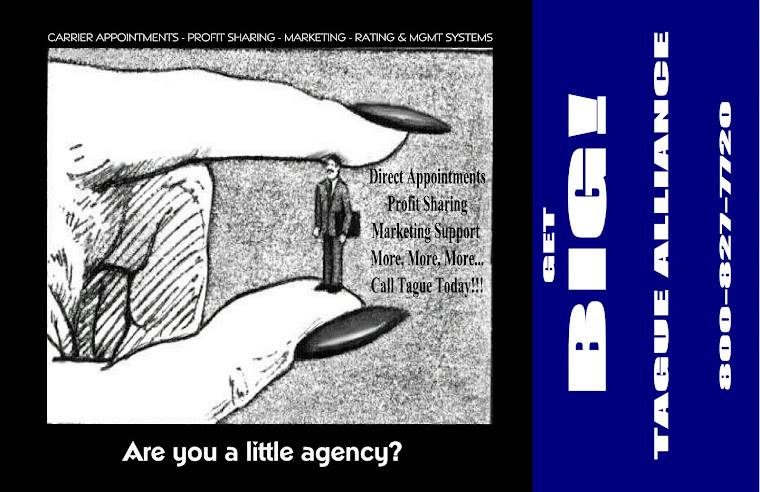Wednesday, February 24, 2010
Tague Alliance - Hired & Non-Owned Auto Claims
Monday, February 22, 2010
Under Insured Properties - Tague Alliance
California Regulator Considering Regs to Alleviate Underinsurance
By Patricia-Anne Tom
February 22, 2010
The California Department of Insurance is considering proposing new regulations governing standards and training for estimating replacement value on homeowners’ insurance. Among the ideas that was floated at a recent CDI workshop on the matter was to require continuing education for agents and brokers on replacement cost minimum standards, according to Steve Young, senior vice president and general counsel for Insurance Brokers and Agents of the West.
The idea for new regulations or legislation governing replacement value on homeowners insurance stems from the concern that homeowners are under-insured, explained Darrel Ng, CDI spokesman. He said the problem arises frequently after wildfires in California, when hundreds or thousands of homes in the same geographic area are destroyed, which causes construction costs to increase.
“The genesis of the issue was seen in the 2007 San Diego Fires and fires in Santa Barbara that demand surge is an issue that’s not addressed by the current model used by insurance companies,” he said. “We hold insurance recovery forums after every major wildfire, and that’s the No. 1 complaint we get most consistently, and one as a Department we’re not empowered to fix because state law currently says the homeowner is in charge of determining how much insurance to get for his or her home.”
Ng said the Department held the workshop to gather information on how to fix the policy issue.
IBA West’s Young said in his testimony that he appreciated the DOI’s and Commissioner’s “collective desire to address the pernicious issue of underinsurance in homeowner’s insurance, and for convening (the) pre-notice public discussion in order to fully evaluate not only (the DOI’s) contemplated solutions, but also alternatives.” And he noted that his association's membership shares the "desire to ensure that California homeowners better understand how the replacement cost of their insured property and contents is cacluated, and to make fully informed decisions regarding replacement cost when they select policy coverage limits."
Young noted it was “essential to understand the complex and varied reasons for the existence of the ‘problem’ of underinsurance,” such as economic incentives; the impossibility of obtaining an objective calculation because of too many variations in construction, contents, etc.; and lack of information. It is important to keep those factors in mind as the DOI contemplates imposing new duties upon insurers, producer or consumers, Young said. IBA West is concerned with any proposal that would, as a matter of law, make agents and brokers personally liable for replacement cost estimates produced by third-party vendors that insurers require broker-agents to use.
Ng said it would not be appropriate to comment on potential solutions discussed at the workshop, as the Department is still evaluating all of the information.


